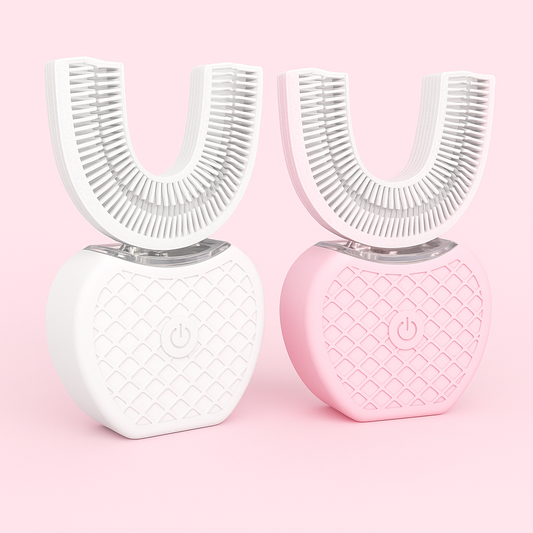Introduction: A New Era of Whitening Toothpaste
Consumers in 2025 are increasingly seeking oral care that does more than just polish teeth. They want whitening toothpaste that supports long-term health teeth, minimizes irritation, and respects the mouth's delicate ecosystem — the oral microbiome. This has driven demand for formulas such as toothpaste without fluoride that include modern actives like niacinamide and xylitol. In this comprehensive guide you’ll learn how these ingredients work, why a microbiome-friendly approach is gaining traction, how to choose the best toothpaste for whiter teeth, and practical routines to maximize whitening while protecting oral health.
What “Microbiome-Friendly Whitening” Means
Microbiome-friendly whitening focuses on removing surface stains and improving tooth color without disrupting beneficial oral bacteria. Unlike aggressive peroxide-based bleaching or high-abrasion pastes that can irritate soft tissue and disturb microbial balance, microbiome-friendly formulas:
- Use gentle stain-removers and enzymes rather than high concentrations of chemical bleaches.
- Include ingredients that promote mucosal health and reduce inflammation, such as niacinamide toothpaste formulations.
- Incorporate sugar substitutes like xylitol that discourage cavity-causing bacteria and support saliva function.
The Science Behind Niacinamide, Xylitol and Fluoride-Free Formulas
Understanding how niacinamide and xylitol operate helps explain why they are featured in many modern whitening toothpastes — especially those marketed as fluoride toothpaste free:
Niacinamide: Tissue Support and Gentleness
Niacinamide (vitamin B3) is best known in skincare but has relevant properties in oral care:
- Anti-inflammatory and barrier-supporting effects that can soothe gums and oral mucosa.
- Indirect support for a balanced oral environment: healthier tissues create conditions less prone to harmful bacterial overgrowth.
- Complementary to whitening approaches by reducing sensitivity and irritation commonly linked to stronger whitening treatments.
Xylitol: Microbial Modulation and Remineralization Support
Xylitol is a sugar alcohol backed by dental research. Its advantages for a whitening toothpaste include:
- Reduction of Streptococcus mutans and other cariogenic bacteria because these microbes cannot metabolize xylitol efficiently.
- Support for saliva flow and natural remineralization, which helps preserve enamel and reduces the appearance of surface staining.
- Indirect stain control: by limiting harmful biofilm formation, xylitol helps prevent the buildup that can darken teeth over time.
Why Some Consumers Prefer Toothpaste Without Fluoride
Fluoride is an effective anti-cavity agent, but some people look for toothpaste without fluoride for several reasons:
- Personal or philosophical preferences favoring fluoride-free personal care products.
- Concerns about cumulative fluoride exposure from multiple sources.
- Sensitivity or reactions in rare cases where users experience irritation.
When choosing toothpaste without fluoride, it’s important to replace cavity-fighting benefits with other strategies such as xylitol inclusion, calcium and phosphate remineralizing agents, and strict oral hygiene practices. Discuss changes with your dentist, especially for children or individuals at high risk of decay.
How Microbiome-Friendly Whitening Compares to Traditional Whitening
Traditional whiteners typically fall into two categories: peroxide-based bleaching (in-office or at-home strips) and high-abrasion paste. Microbiome-friendly whitening differs in several practical ways:
- Lower incidence of sensitivity and gum irritation due to gentler actives like niacinamide and enzyme systems.
- Less risk of disrupting beneficial bacteria, which play roles in disease prevention and oral homeostasis.
- Gradual improvement in shade and stain control that emphasizes maintenance and prevention, rather than dramatic bleaching.
Key Ingredients to Look for in a Microbiome-Friendly Whitening Toothpaste
If you are shopping for a good whitening toothpaste that is microbiome-friendly, prioritize product labels with the following:
- Niacinamide — tissue soothing and anti-inflammatory support (look for “niacinamide toothpaste” in ingredient lists).
- Xylitol — for microbial balance and saliva stimulation; often clearly labeled as “toothpaste with xylitol.”
- Mild abrasives (low-to-moderate RDA silica) or enzymatic stain removers (papain, bromelain) for safe surface stain control.
- Remineralizing agents like calcium phosphate, hydroxyapatite, or nano-CPP to support enamel and help maintain whitening.
- Low or no peroxide levels if you want a gentler regimen or are seeking a true fluoride toothpaste free option.
- No unnecessary surfactants or strong detergents that can dry oral tissues and upset microbiome balance.
Practical Tips for Choosing the Best Toothpaste for Whitening and Oral Health
- Decide whether you need fluoride for cavity prevention. For many people, fluoride remains beneficial; if you opt out, adopt alternative decay-prevention measures.
- Search for clinical claims and evidence: independent studies or clinical trials linked on the product page are a plus.
- Check for the words users search for: toothpaste whitening best, toothpaste that whitens teeth, best toothpaste whitening teeth.
- Read customer reviews for long-term effects: search comments for changes in sensitivity, gum comfort, and visible whitening.
- Look for brands that prioritize transparency and sustainable sourcing if those values matter to you.
Daily and Weekly Routines to Maximize Results
To get the most from microbiome-friendly whitening toothpaste and protect your teeth, follow these habits:
- Brush twice daily for two minutes with a soft-bristled brush using gentle, circular motions.
- Floss daily to remove interproximal plaque that contributes to discoloration and decay.
- Rinse with water after consuming staining foods or drinks; use a straw for beverages like coffee or tea to reduce front-tooth exposure.
- Use an alcohol-free mouthwash if needed; avoid overly antiseptic rinses that can disrupt oral microbial balance.
- Schedule routine cleanings with your dental hygienist to remove calculus and deep stains that toothpaste alone cannot address.
Who Is an Ideal Candidate for Niacinamide + Xylitol Whitening Toothpaste?
These products are especially suitable for:
- People with mild surface staining who prefer gradual whitening without peroxide sensitivity.
- Individuals with gum sensitivity or mild inflammation seeking a gentle, soothing formula.
- Those who prefer toothpaste with xylitol for natural cavity-protection strategies and microbiome support.
- Anyone looking for toothpaste without fluoride alternatives that still prioritize oral health.
Limitations: What to Expect (and What Not to Expect)
While microbiome-friendly whitening pastes have many benefits, they have limits:
- They usually cannot match the immediate, dramatic color change produced by professional peroxide bleaching.
- Internal stains (from antibiotics or trauma) are not addressed by surface whitening formulations.
- Results are incremental and rely heavily on consistent use and lifestyle adjustments to reduce new staining.
Real-World Evidence and Research Highlights
Researchers increasingly study non-fluoride strategies for caries prevention and microbiome modulation. Key observations relevant to microbiome-friendly whitening include:
- Multiple clinical trials support xylitol’s role in reducing cariogenic bacteria and lowering caries risk when used regularly.
- Early research indicates niacinamide’s anti-inflammatory properties can benefit mucosal health, which may improve tolerance to oral-care regimens.
- Studies on low-abrasion whitening systems and enzymatic stain removal show effective surface stain reduction with lower sensitivity compared with peroxide approaches.
Always look for product pages that cite studies or provide links to peer-reviewed research if clinical evidence is important to you.
Common SEO Keywords and Phrases Explained
If you’re searching online, these phrases will help you find suitable products and useful reviews:
- Good whitening toothpaste — typically denotes gentle, effective stain removal with positive user feedback.
- Toothpaste that whitens teeth / toothpaste for whitening teeth — general category; compare formulations and active ingredients.
- Toothpaste without fluoride / fluoride toothpaste free — for users seeking fluoride-free formulas; check for xylitol and remineralizing agents.
- Toothpaste with xylitol — a strong indicator the product aims to support microbiome and cavity prevention without fluoride.
- Niacinamide toothpaste — indicates anti-inflammatory, tissue-supporting ingredients that may reduce irritation during whitening.
- Best toothpaste for whiter teeth / toothpaste whitening best — high-intent search terms; use them when comparing top-reviewed products.
Product Selection Tips — What Labels and Claims Mean
Understanding marketing language helps you make informed choices:
- "Whitening" can mean anything from mild stain reduction to active bleaching. Look for ingredient specifics to know which type you’re buying.
- "Enamel-safe" or mention of RDA (relative dentin abrasivity) values suggests attention to abrasion levels.
- "Clinically tested" should ideally link to a study or summary; absence of evidence doesn’t mean a product is ineffective, but documented research is a plus.
Safety Considerations and When to See a Professional
Switching to a toothpaste without fluoride or a new active like niacinamide usually poses minimal risk for healthy adults, but consider these precautions:
- Children under 2 or those who cannot reliably spit should use fluoride toothpaste per pediatric dental guidance to prevent decay.
- Monitor any new irritation or allergic reactions; discontinue use if sensitivity or rash develops and consult a professional.
- If you have a history of heavy decay or other dental disease, consult your dentist before eliminating fluoride from your regimen.
How to Pair a Microbiome-Friendly Toothpaste with Other Treatments
If you want faster or more dramatic whitening while preserving microbiome health, consider combination approaches:
- Use a microbiome-friendly whitening toothpaste daily and reserve professional peroxide treatments infrequently under dental supervision.
- Alternate a restorative toothpaste (with remineralizing agents) and a microbiome-friendly whitening paste to balance goals.
- Incorporate regular dental cleanings and polishing to remove stubborn extrinsic stains that toothpaste alone cannot remove.
Addressing Related Searches: "Toothpaste Zit" and Other Odd Queries
Some users search for terms like "toothpaste zit" when curious about topical acne uses. A note of caution: toothpaste is not formulated for skin treatment and can irritate delicate facial skin. Stick to products specifically designed for acne care and consult a dermatologist for guidance.
Where to Find Microbiome-Friendly Whitening Toothpastes
Several specialty brands now offer thoughtfully formulated options. If you want to browse curated selections that emphasize microbiome-friendly whitening and alternatives to mainstream fluoride-heavy products, consider reputable online retailers that highlight ingredient transparency and clinical claims. For example, you can explore products described as the best toothpaste for whiter teeth or search for a toothpaste with xylitol and niacinamide toothpaste at Havana Body’s curated collection.
Top Questions (FAQs)
- Will a fluoride-free toothpaste with xylitol and niacinamide whiten my teeth? It can reduce surface stains and improve overall tooth appearance over time while being gentler than bleach-based systems. Expect gradual results and maintain consistent use.
- Is niacinamide effective for gums? Niacinamide has soothing and anti-inflammatory properties that can support mucosal health, which may help with mild gum irritation.
- Is xylitol safe for daily use? Yes, xylitol is safe and effective for reducing cariogenic bacteria in humans. Keep xylitol products away from pets, particularly dogs, as it is toxic to them.
- Can I use microbiome-friendly whitening toothpaste after professional whitening? Yes — these pastes are often recommended to maintain shade and reduce sensitivity after professional treatments.
Conclusion: Balancing Whiteness and Oral Ecosystem Health
Microbiome-friendly whitening toothpastes that are toothpaste without fluoride and contain supportive actives like niacinamide and xylitol represent a balanced approach to cosmetic improvement and long-term oral well-being. They prioritize gentle stain removal, reduced irritation, and microbial balance while offering viable alternatives for people seeking fluoride-free options.
If you’re ready to try products that combine these benefits and want a curated shopping experience, consider exploring Havana Body’s selection of carefully formulated options. Find toothpaste that whitens teeth and the best toothpaste whitening teeth choices at Havana Body — browse, compare, and purchase products designed for healthier, whiter smiles: shop now at Havana Body.
Remember: consult your dentist before making major changes to your oral care routine, especially for children, pregnant people, or anyone with active dental disease. With the right product and consistent habits, you can achieve a brighter smile while protecting the oral microbiome and supporting long-term dental health.


